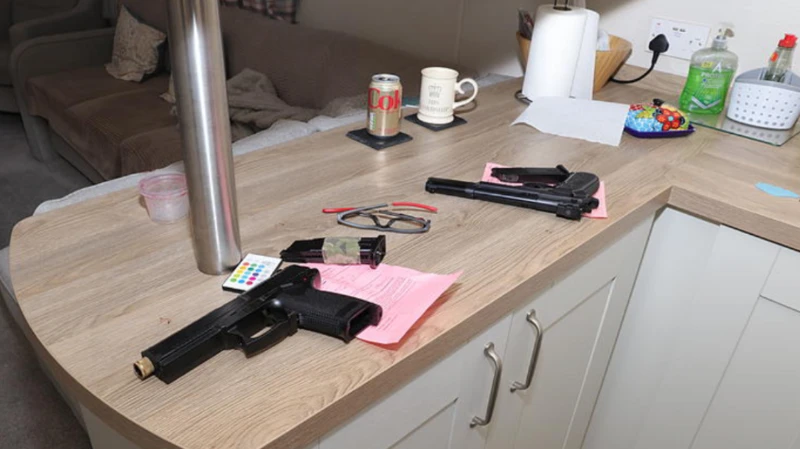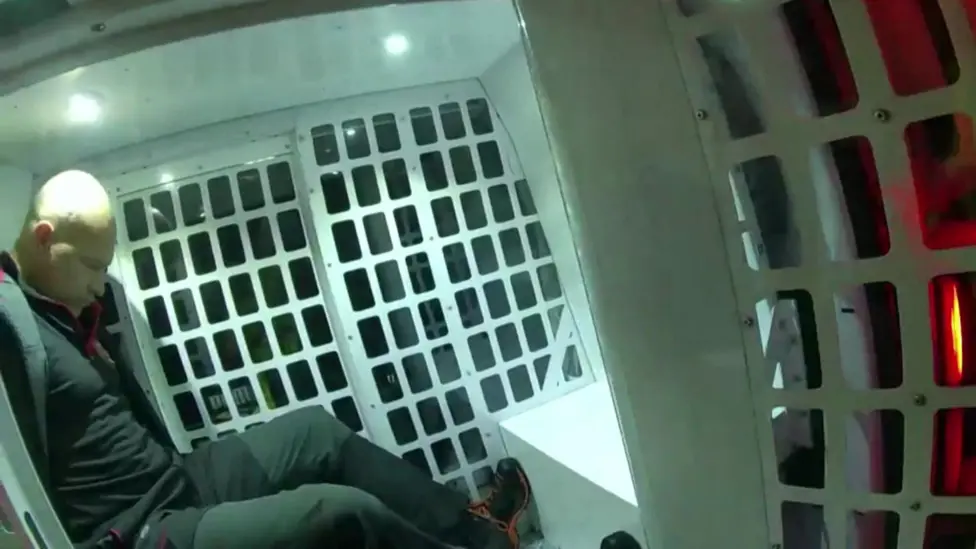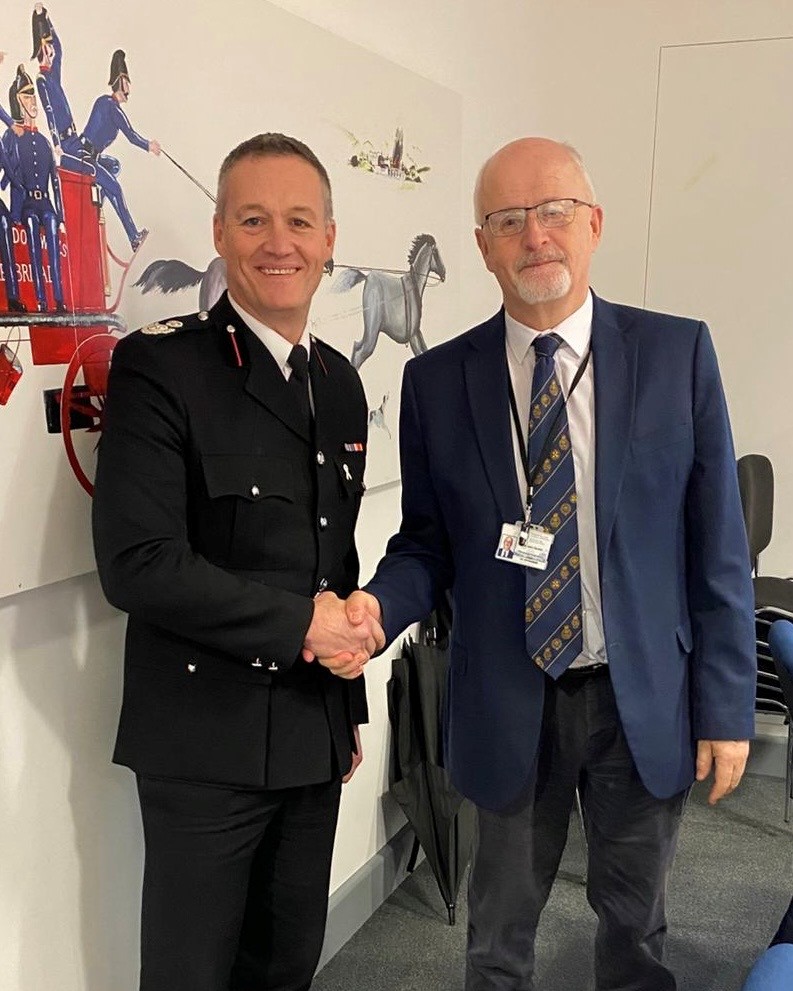News
A missing Pembroke shipwreck discovered in Northern Canada


Missing vessel: Is this how it ended?
A NINETEENTH century vessel, built by the Royal Navy in Pembroke dockyard, that has been missing for over 150 years, was discovered last month, and identified last week. Found off the coast of Northern Canada in just 11 metres of water, HMS Erebus went missing in 1845 under the command of Sir John Franklin, who was searching for what was the legendary North West Passage.
John Geiger, president of the Royal Canadian Geographical society said of the find: “We are over the moon. It is in astonishing condition.” HMS Erebus set sail with another vessel, HMS Terror, and the last time both ships were seen was in the summer of 1845 whilst passing whaling boats in Baffin Bay off the coast of Greenland. Historians thought that the ships could have been trapped in the ice flows of the Canadian Arctic.
HMS Terror has not been found yet. Canadian Prime Minister Stephen Harper even participated in the search himself, such was his determination to resolve the mystery. HMS Erebus was a Hecla-class bomb vessel designed by Sir Henry Peake and constructed by the Royal Navy in Pembroke dockyard, Wales in 1826. The vessel was named after the dark region in Hades of Greek mythology called Erebus.
The 372-ton ship was armed with two mortars – one 13 in (330 mm) and one 10 in (250 mm) – and 10 guns. For the voyage to the Arctic, under Sir John Franklin, Erebus and Terror were outfitted with steam engines (converted from railway locomotive engines), and had iron plating added to their hulls. Sir John Franklin sailed in Erebus, in overall command of the expedition, and Terror was again under the command of Francis Crozier.
The expedition was ordered to gather magnetic data in the Canadian Arctic and to complete a crossing of the Northwest Passage, which had already been charted from both the east and west but had never been entirely navigated. The ships were last seen entering Baffin Bay in August 1845.
News
Wife and lover jailed for plot to murder husband to continue affair

A WOMAN and her lover have been jailed after conspiring to murder her husband of ten years so they could continue their affair.
Michelle Mills and Geraint Berry, both aged 46, were each sentenced to 19 years’ imprisonment at Swansea Crown Court after a jury found them guilty of plotting to kill Christopher Mills in a plan intended to make his death appear as a suicide.
The conspiracy was uncovered after Mr Mills, 55, an ex-serviceman, fought back during a late-night ambush at a caravan the couple were staying in at Cenarth, Carmarthenshire, on Friday, September 20, 2024.
Berry, assisted by Steven Thomas, forced entry into the caravan armed with imitation firearms, gas masks and cable ties. A pre-prepared suicide note falsely purporting to have been written by Mr Mills was later recovered by police.
The attack failed when Mr Mills defended himself, managing to disarm the intruders and forcing them to flee on foot.
Armed response officers, police dog units and the National Police Air Service were deployed. Berry and Thomas were arrested shortly afterwards after being spotted hiding in bushes by a police helicopter.

The incident was initially reported to Dyfed-Powys Police by Michelle Mills, who claimed to be unaware of any motive for her husband to be targeted. At first, officers treated the matter as an aggravated burglary.
However, detectives quickly became suspicious.
Detective Inspector Sam Gregory, of Ceredigion CID said: “We had a report of two masked men attempting to gain access to a caravan and assaulting the owner. On the surface, it appeared the case would be fairly straightforward.
“However, when Berry and Thomas were searched, officers found gas masks, imitation firearms and, most disturbingly, a typed suicide note said to have been written by Christopher Mills.”

The investigation was escalated to CID, where digital forensic enquiries uncovered extensive communication between Mrs Mills and Berry revealing a long-running affair and detailed plans to murder her husband.
Messages exchanged from August 2024 onwards showed the pair discussing multiple methods of killing Mr Mills, including suffocating him while he slept, overdosing him on sleeping tablets, poisoning his food with antifreeze or foxglove, and staging an explosion in his car.
Berry also contacted an associate asking how to obtain a firearm with a suppressor and how to make a vehicle explode when the ignition was started.
The court heard there were two aborted attempts to ambush Mr Mills at the caravan on August 28 and 29, with Berry injuring his knee during one failed attempt.
On the third attempt, Mrs Mills told Berry she would encourage her husband to drink alcohol so he would fall asleep. Messages showed Berry informing her he had arrived at the holiday park moments before the attackers burst into the caravan.

Immediately after the men fled, Mrs Mills sent Berry messages urging him to escape, delete communications and expressing affection, despite her husband having just been assaulted.
Mrs Mills was later arrested at her home in Maes Ty Gwyn, Llwynhendy. Despite denying involvement, she told an arresting officer she would be “going to jail for this”.
DI Gregory said: “From start to finish, Mrs Mills denied any involvement. She initially claimed she did not know the attackers, and later said she believed the messages were just fantasy.
“At no point did she attempt to stop Berry or tell him she did not want the plans to go ahead. Her only concern was not getting caught.”
Sentencing the pair, Mr Justice Nicklin said the plot involved “significant planning and premeditation”, despite being “poorly executed”, and placed Mr Mills’ life at genuine risk.
The court heard victim impact evidence describing how the attack had “pretty much ruined” Mr Mills’ life, leaving him suffering flashbacks and long-term psychological harm.

Mrs Mills was also sentenced to 18 months’ imprisonment for perverting the course of justice, to be served concurrently with her 19-year sentence. Berry received a concurrent 18-month sentence for possession of an imitation firearm.
Steven Thomas, aged 47, of Clos Coffa, Clydach, was found not guilty of conspiracy to murder but had previously admitted possessing a firearm with intent to cause Christopher Mills to believe unlawful violence would be used against him. He was sentenced to 12 months in custody, with time already served on remand taken into account.
The judge said there had been an element of coercion or exploitation by Berry in relation to Thomas, who expressed remorse for his actions.
DI Gregory added: “It is easy to focus on the dramatic details of this case and forget there is a real victim. Mr Mills’ life was genuinely at risk, and the person he should have been able to trust the most was behind the plot.
“He has shown remarkable strength and courage throughout this investigation, and I hope he can now move forward and begin to process what he has endured.
“Despite their claims that this was fantasy, the evidence showed the conspiracy was real, calculated and repeated. Mills and Berry showed no remorse for the devastation they caused.”
Crime
Milford Haven man denies child sex charges as trial date set


A MAN originally from Milford Haven has pleaded not guilty to a series of sexual offences involving a child after recently moving to Cornwall.
James Kershaw, aged 45, formerly of Milford Haven and now living in Quethiock, Cornwall, appeared in court on Friday (Dec 19), where he denied all four sexual charges put to him.
The hearing was his first Crown Court appearance in the case, during which a trial date was fixed for October 5.
Kershaw was allowed to remain on bail under strict conditions, including that he must have no contact with any prosecution witnesses.
Kershaw appeared via video link from his solicitor’s office in Cornwall. The judge described this as “a very generous decision by the listings officer” and said it had “presumably been arranged due to the distance from you to the court”.
Allegations denied
The charges relate to alleged incidents said to have taken place in Liskeard, Cornwall, between October 26 and November 1, 2023.
Kershaw is accused of engaging in sexual communication with a child under the age of 16 and of causing a child aged 13 to watch sexual activity. He also faces two allegations of causing or inciting a girl aged 13 to engage in sexual activity of a non-penetrative nature on separate dates.
In addition, Kershaw is charged with two counts of breaching a Sexual Harm Prevention Order imposed by Derby Crown Court in May 2022. These allegations include the use of an undisclosed Facebook account and the deletion of messages, both of which are said to be prohibited under the terms of that order.
Kershaw denies all allegations.
The court ordered that Kershaw may remain on bail pending trial, subject to conditions including a strict ban on contacting any witnesses.
The complainant’s identity is protected by law under the Sexual Offences (Amendment) Act 1992.
The case is due to return to court when the trial begins in October.
Community
Craig Flannery appointed as new Chief Fire Officer

MID AND WEST WALES FIRE SERVICE LEADERSHIP CHANGE
MID and West Wales Fire and Rescue Service has announced the appointment of Craig Flannery as its new Chief Fire Officer, with effect from Monday, December 15, 2025.
Mr Flannery has served with the Service for more than twenty years, progressing through a wide range of middle management and senior leadership roles across both operational and non-operational departments.
During his career, he has been closely involved in strengthening operational delivery, risk management and organisational development. His work has included leading innovation in learning and development, overseeing the Service’s On-Call Improvement Programme, and driving investment in key enabling functions such as workforce development and information and communication technology.

The appointment followed a rigorous, multi-stage recruitment process led by Mid and West Wales Fire and Rescue Authority. Candidates were assessed through structured interviews, strategic leadership exercises and scenario-based assessments designed to test operational judgement, organisational vision and the ability to lead a modern fire and rescue service.
External professional assessors were also engaged to provide independent scrutiny, ensuring the process met high standards of fairness, transparency and challenge.
Mr Flannery emerged as the strongest candidate, demonstrating clear strategic leadership capability, detailed organisational knowledge and a strong commitment to community safety and service improvement.
Councillor John Davies, Chair of Mid and West Wales Fire and Rescue Authority, said: “Craig brings a deep understanding of our Service and a clear vision for its future. His appointment will strengthen our ability to innovate, support our workforce and deliver high-quality protection for the communities we serve.
“As we navigate a rapidly changing landscape, Craig’s experience in driving innovation and organisational development will be invaluable in helping us adapt and transform for the future.”
Commenting on his appointment, Mr Flannery said: “It is a privilege to lead this outstanding Service. I am committed to supporting our people, strengthening partnerships and building on the strong foundations already in place.
“As the challenges facing fire and rescue services continue to evolve, we must modernise and innovate, ensuring we have the skills, technology and capability needed to meet the needs of our communities. I look forward to working with colleagues and partners across Mid and West Wales to deliver a resilient, progressive Service that keeps people safe and places our staff at the heart of everything we do.”
-

 Crime2 days ago
Crime2 days agoMilford Haven man jailed after drunken attack on partner and police officers
-

 News5 days ago
News5 days agoDyfed-Powys Police launch major investigation after triple fatal crash
-

 Crime2 days ago
Crime2 days agoTeenager charged following rape allegation at Saundersfoot nightclub
-

 Crime3 days ago
Crime3 days agoMan charged with months of coercive control and assaults
-

 Crime4 days ago
Crime4 days agoMan sent to Crown Court over historic indecent assault allegations
-

 Crime6 days ago
Crime6 days agoMan spared jail after baseball bat incident in Milford Haven
-

 Crime4 days ago
Crime4 days agoMilford Haven man admits multiple offences after A477 incident
-

 Crime3 days ago
Crime3 days agoWoman ‘terrified in own home’ after ex breaches court order



















landon grimes
October 8, 2025 at 11:51 pm
This was very enlightening. Go live with wontumi live — Ghanaian TV with sports and news. simple interface and quick start. program schedule, replays, studio discussions. HD streaming with low latency.